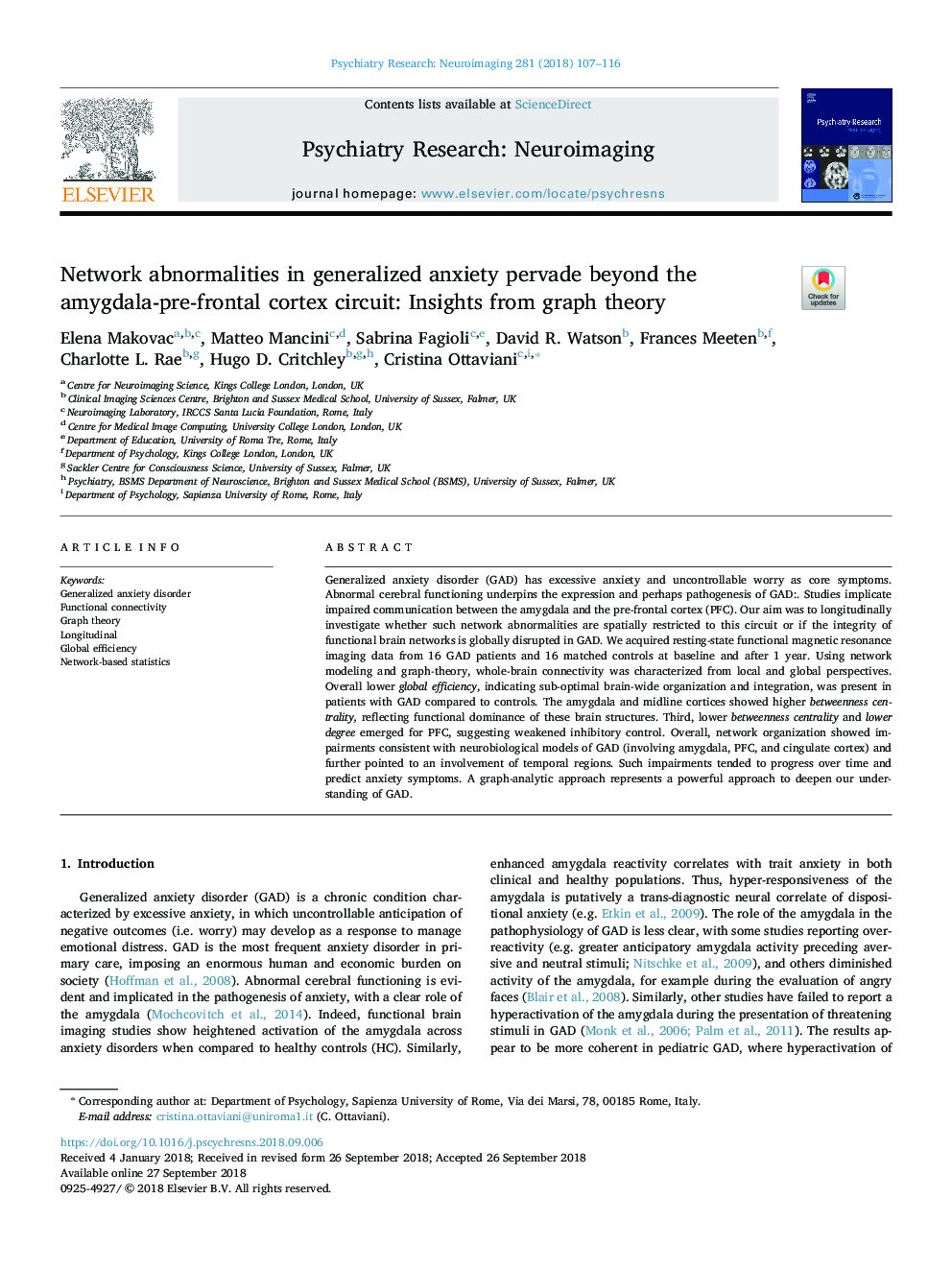| Article ID | Journal | Published Year | Pages | File Type |
|---|---|---|---|---|
| 11028160 | Psychiatry Research: Neuroimaging | 2018 | 10 Pages |
Abstract
Generalized anxiety disorder (GAD) has excessive anxiety and uncontrollable worry as core symptoms. Abnormal cerebral functioning underpins the expression and perhaps pathogenesis of GAD:. Studies implicate impaired communication between the amygdala and the pre-frontal cortex (PFC). Our aim was to longitudinally investigate whether such network abnormalities are spatially restricted to this circuit or if the integrity of functional brain networks is globally disrupted in GAD. We acquired resting-state functional magnetic resonance imaging data from 16 GAD patients and 16 matched controls at baseline and after 1 year. Using network modeling and graph-theory, whole-brain connectivity was characterized from local and global perspectives. Overall lower global efficiency, indicating sub-optimal brain-wide organization and integration, was present in patients with GAD compared to controls. The amygdala and midline cortices showed higher betweenness centrality, reflecting functional dominance of these brain structures. Third, lower betweenness centrality and lower degree emerged for PFC, suggesting weakened inhibitory control. Overall, network organization showed impairments consistent with neurobiological models of GAD (involving amygdala, PFC, and cingulate cortex) and further pointed to an involvement of temporal regions. Such impairments tended to progress over time and predict anxiety symptoms. A graph-analytic approach represents a powerful approach to deepen our understanding of GAD.
Keywords
Related Topics
Life Sciences
Neuroscience
Biological Psychiatry
Authors
Elena Makovac, Matteo Mancini, Sabrina Fagioli, David R. Watson, Frances Meeten, Charlotte L. Rae, Hugo D. Critchley, Cristina Ottaviani,
